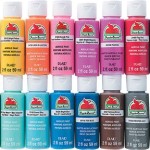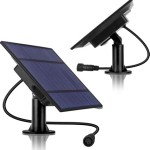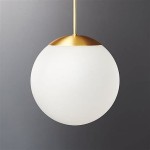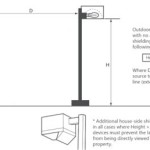Timer Switches for Outdoor Lights: A Guide to Enhancing Your Outdoor Lighting
Outdoor lighting is a crucial element of any home, enhancing safety, security, and curb appeal. However, manually switching lights on and off can be inconvenient and inefficient. Enter timer switches, a simple yet effective solution for automating your outdoor lighting, offering numerous benefits and convenience. This article will delve into the world of timer switches, exploring their types, functionalities, advantages, and considerations for choosing the right one for your needs.
Types of Timer Switches for Outdoor Lights
Timer switches come in various forms, each catering to specific needs and preferences. Here are some of the most common types:
1. Mechanical Timer Switches
Mechanical timer switches are the simplest and most affordable options. They feature a rotary dial or a series of switches that allow you to manually set the on and off times. These switches typically offer basic scheduling options, with limited flexibility for complex lighting scenarios. Their mechanical nature also makes them susceptible to wear and tear over time.
2. Digital Timer Switches
Digital timer switches offer greater versatility and precision compared to their mechanical counterparts. They feature digital displays and buttons for setting precise on and off times, often with customizable schedules and multiple settings. Digital timer switches can be programmed for daily, weekly, or even holiday schedules, making them ideal for creating consistent lighting patterns.
3. Astronomical Timer Switches
Astronomical timer switches are designed to synchronize lighting with the rising and setting of the sun. They use a built-in light sensor to determine the optimal time for turning lights on and off based on the natural light cycle. This type of switch is particularly useful for creating a natural ambiance and conserving energy by automatically adjusting to seasonal changes in daylight hours.
4. Photocell Timer Switches
Photocell timer switches are similar to astronomical timers but use a photocell to detect ambient light levels. When the ambient light falls below a certain threshold, the switch automatically turns on the lights. Photocell timers are often used for security lighting, illuminating pathways or entrances at night.
Advantages of Using Timer Switches for Outdoor Lights
Utilizing timer switches for your outdoor lighting offers numerous benefits, including:
1. Enhanced Safety and Security
By automatically turning on lights at dusk or during specific hours, timer switches create an illusion of occupancy, deterring potential intruders and enhancing safety. Well-lit pathways and entrances also reduce the risk of accidents and falls.
2. Increased Energy Efficiency
Timer switches eliminate the need to manually turn lights on and off, ensuring that lights are only activated when needed. This minimizes energy consumption and reduces electricity bills, especially during periods of extended darkness.
3. Improved Convenience
With timer switches, you can set and forget your outdoor lighting schedules, eliminating the need for manual intervention. This frees up your time and offers greater control over your home’s lighting patterns.
4. Enhanced Curb Appeal
Timer switches can be used to create aesthetically pleasing lighting effects, illuminating landscaping, pathways, and features at specific times. This enhances your home’s curb appeal, creating a welcoming and inviting atmosphere.
Key Considerations for Choosing a Timer Switch
When selecting a timer switch for your outdoor lights, consider the following factors:
1. Type of Switch
Depending on your specific needs and preferences, you can choose from mechanical, digital, astronomical, or photocell timer switches. Evaluate the required functionality, flexibility, and budget to make an informed decision.
2. Scheduling Options
Consider the desired scheduling options, such as daily, weekly, or holiday settings. Choose a switch that allows for customization and meets your specific lighting needs.
3. Installation and Wiring
Assess the complexity of installation and wiring. Some timer switches may require professional installation, while others can be managed by a homeowner with basic electrical knowledge.
4. Durability and Weather Resistance
Outdoor timer switches must be durable and resistant to weather elements like rain, snow, and extreme temperatures. Choose a switch with a weatherproof rating suitable for your climate.
5. Warranty and Support
Consider the warranty and support offered by the manufacturer. A reliable warranty provides peace of mind and protection against defects or malfunctions.
In conclusion, timer switches provide an efficient and convenient way to automate your outdoor lighting. By understanding the various switch types, advantages, and key considerations, you can make an informed decision to choose the right timer switch to enhance your home’s safety, security, energy efficiency, and curb appeal.

Tm619w Heavy Duty Ip55 Weatherproof Outdoor Digital Time Switch Timer For Lights China Light Made In Com

Outdoor Timers Appliance Timer Controls Switches Light Switch Energy Circle

Tbs Outdoor Lighting Timer Box Alion

The Best Outdoor Light Timer It S A Must Have Home Gadgets Driven By Decor Repair

Heavy Duty Mechanical Outdoor Lighting Timer Volt

Dewenwils Outdoor Light Timer Waterproof Plug In Switch Electrical S For Holiday Decoration Lights String 15a 1 2hp Ul Listed Com

The 7 Best Light Switch Timers Reviews Guide Electronicshub

The Best Timer Switch For Your Outdoor Landscape Lighting System

Dusk To Dawn Switch With A Countdown Timer

Techmar Dusk To Dawn Timer Sensor
Related Posts







